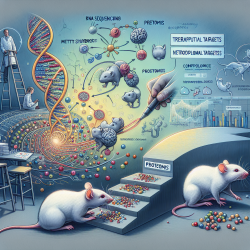The COVID-19 pandemic has brought unprecedented challenges to the healthcare sector. As a practitioner, staying informed about the latest research and developments is crucial in providing the best care for your patients. The research article titled "SARS-CoV-2 pathophysiology and assessment of coronaviruses in CNS diseases with a focus on therapeutic targets" offers valuable insights into the impact of SARS-CoV-2 on central nervous system (CNS) diseases and highlights potential therapeutic targets.
The Impact of SARS-CoV-2 on CNS Diseases
SARS-CoV-2, the virus responsible for COVID-19, has been shown to affect multiple organ systems, including the CNS. The virus's neuroinvasive properties can exacerbate conditions such as Alzheimer's-like dementia and multiple sclerosis. Understanding these interactions is vital for practitioners who manage patients with these conditions.
The research highlights how SARS-CoV-2 can infiltrate the brainstem and potentially spread through synaptic pathways. This knowledge is crucial for developing strategies to protect vulnerable populations, such as those with pre-existing CNS conditions.
Therapeutic Targets and Strategies
The study identifies several therapeutic targets that could be leveraged to combat COVID-19 more effectively. These include:
- Protease Inhibitors: Drugs like hydroxychloroquine (HCQ) and Remdesivir have shown potential in inhibiting viral replication.
- Autophagy Modulation: Targeting autophagy-related pathways may offer new avenues for treatment, particularly in managing viral load and immune response.
- Spike Protein Inhibitors: Developing inhibitors that block the spike protein's interaction with host cells could prevent viral entry and spread.
The research also emphasizes the importance of considering comorbidities such as diabetes mellitus in treatment plans. Patients with diabetes are at higher risk for severe outcomes due to increased ACE2 receptor expression, which facilitates viral entry.
A Call to Action for Practitioners
This research underscores the need for continuous education and adaptation in clinical practice. By integrating these findings into your practice, you can enhance patient care and outcomes during this challenging time.
If you're interested in delving deeper into this topic, consider accessing the full research article. It provides a comprehensive overview of the virus's pathophysiology and potential therapeutic strategies that could be pivotal in shaping future treatment protocols.










